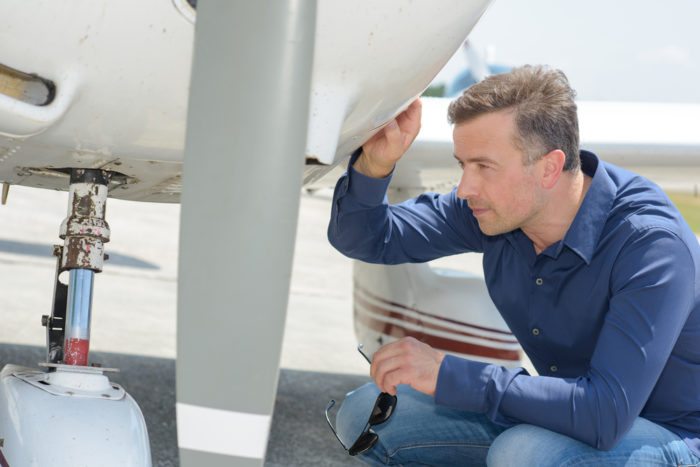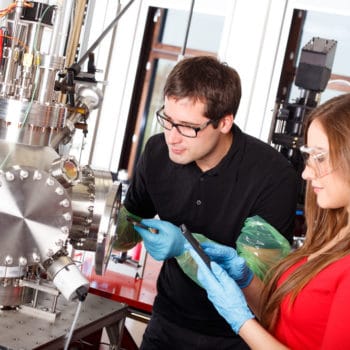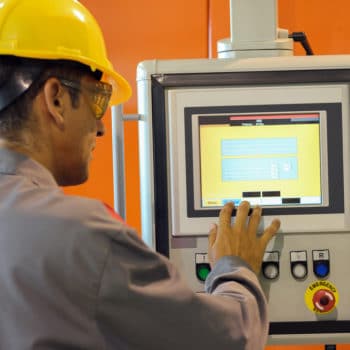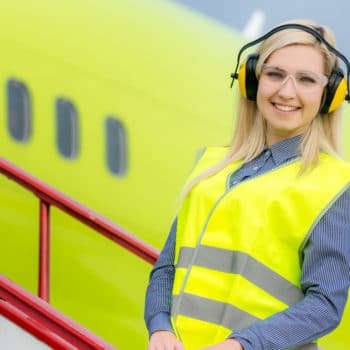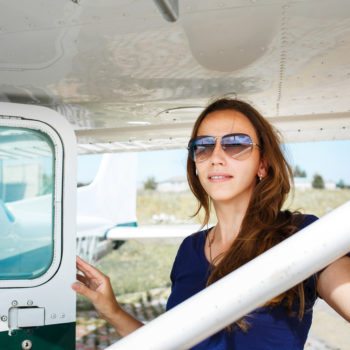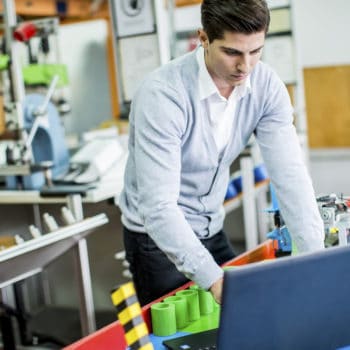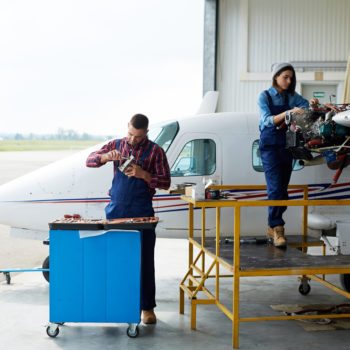Why We Love It
-
$110,570Potential Avg. Salary
-
-2.3%Job Growth Rate
-
Good Entry Level SalaryCareer Attribute
-
InvestigativeCareer Attribute
Aerospace engineers design aircrafts and the components used on aircrafts to make them functional, more efficient, and safer. They may work as aeronautical engineers and design airplanes or helicopters, or they may work as astronautical engineers and design space crafts and satellites.
Recommended Schools
What is an Aerospace Engineer?
The following job responsibilities are common for individuals in aerospace engineer roles:
- Design, develop, and test technologies used on aircrafts or in space exploration
- Review plans and proposals for new technologies and determine if plans would lead to functional or feasible products
- Conduct and oversee testing to ensure functionality, reliability, and safety of developed products
- Conduct testing to identify components that are causing malfunctions
- Work with project managers to develop plans for design and development budget and timeline
A Day in the Life
Aerospace engineers make safe air transportation possible. They design and develop the technologies used in modern planes, helicopters, and space exploration vehicles, allowing for the safe transportation of large groups of passengers and/or cargo, faster planes, and further space exploration, among other benefits. They may oversee design and development of specific flight components, such as structural design, navigation systems, instrument and control systems, and propulsion systems.
Aerospace engineers create plans that use both existing and new technologies. Those that work in research may spend their days tweaking components to develop new and more efficient flight systems. Others may work in manufacturing and spend their days developing plans for new, cost-efficient and safe aircrafts for mass production. Beyond design, aerospace engineers also have responsibilities for testing developed components, ensuring products meet all specifications and requirements of designs.
In addition to developing new products and components, aerospace engineers also perform troubleshooting on existing products and components. Often, new components go through a variety of revisions before they’re fully functional and usable, and the engineer is on point to troubleshoot problems discovered during the development phase. They’re also responsible for identifying the cause of issues on components in the post-production stage and recommending product recalls if necessary.
Typical Work Schedule
Most aerospace engineer roles are full-time jobs, though the working hours and days may vary by employer. Overtime can be common for this role, especially during high production times or to meet project deadlines.
Aerospace Engineer Specializations
- Aeronautical engineers specialize in creating products and components used in airplanes, helicopters, and other types of aircraft.
- Astronautical engineers specialize in creating products and components used in space travel and exploration, such as space craft and satellites.
Typical Employers
The industries that employ the highest number of aerospace engineers include manufacturing, government, and research and development.
Recommended Schools
How To Become an Aerospace Engineer
The minimum requirement for finding work as an aerospace engineer is a bachelor’s degree. The most common bachelor’s degree pursued by aspiring aerospace engineers is a bachelor’s in aerospace engineering, though more general engineering degrees may be acceptable as well. Graduates of bachelor’s degree programs in aerospace engineering usually only qualify for entry-level positions in the field, typically in the manufacturing industry under more experienced aerospace engineers.
Some aspiring aerospace engineers opt to begin their careers with less education in order to gain professional experience. For example, to work as an engineering technician, you only need to have an associate’s degree. You can then find work as an engineering technician while you pursue a bachelor’s degree, making you more competitive for open aerospace engineering roles after graduation from a four-year degree program.
For more advanced positions, significant professional experience may be required, and a graduate degree in aerospace engineering may be a prerequisite as well. Some companies also offer apprenticeship programs to promising aerospace engineers; for example, NASA offers a competitive five-year apprenticeship program to individuals interested in working as astronautical engineers.
Aerospace Engineer Salary Data
We’ve provided you the following to learn more about this career. The salary and growth data on this page comes from recently published Bureau of Labor Statistics data while the recommendations and editorial content are based on our research.
National Anual Salary
Low Range
$84,040Average
$110,570High Range
$158,700National Hourly Wage
Low Range
$40/hrAverage
$53/hrHigh Range
$76/hrHow do Aerospace Engineer salaries stack up to other jobs across the country? Based on the latest jobs data nationwide, Aerospace Engineer's can make an average annual salary of $110,570, or $53 per hour. On the lower end, they can make $84,040 or $40 per hour, perhaps when just starting out or based on the state you live in.
Salary Rankings And Facts
#45 Nationally for All Careers
Above Average Salary Nationally
Programs and Degrees
Here are the most common degrees for becoming an Aerospace Engineer. a is usually recommended and specifically a degree or coursework that prepares you for the particular field, see below.
Highest Education Among Aerospace Engineers
- 5.1% Doctorate
- 32.7% Masters
- 48.1% Bachelors
- 5.2% Associates
- 6.5% College
- 2.3% High School
- 0.1% Less than High School
Job Growth Projections and Forecast
2014 Total Jobs
72,5002024 Est. Jobs
70,800Job Growth Rate
-2.3%Est. New Jobs
-1,700How does Aerospace Engineer job growth stack up to other jobs across the country? By 2024, there will be a change of -1,700 jobs for a total of 70,800 people employed in the career nationwide. This is a -2.3% change in growth over the next ten years, giving the career a growth rate nationwide of Above Average.
Growth Rankings And Facts
#660 Nationally for All Careers
Above Avg. Growth Nationally
What Companies Employ The Most Aerospace Engineers
| Industry | Current Jobs | New Jobs Needed | % Increase |
|---|---|---|---|
| Aerospace product and parts manufacturing | 27,500 | -2,900 | -3% |
| Engineering services | 10,100 | 1,200 | 1% |
| Federal government, excluding postal service | 9,700 | -1,000 | -1% |
